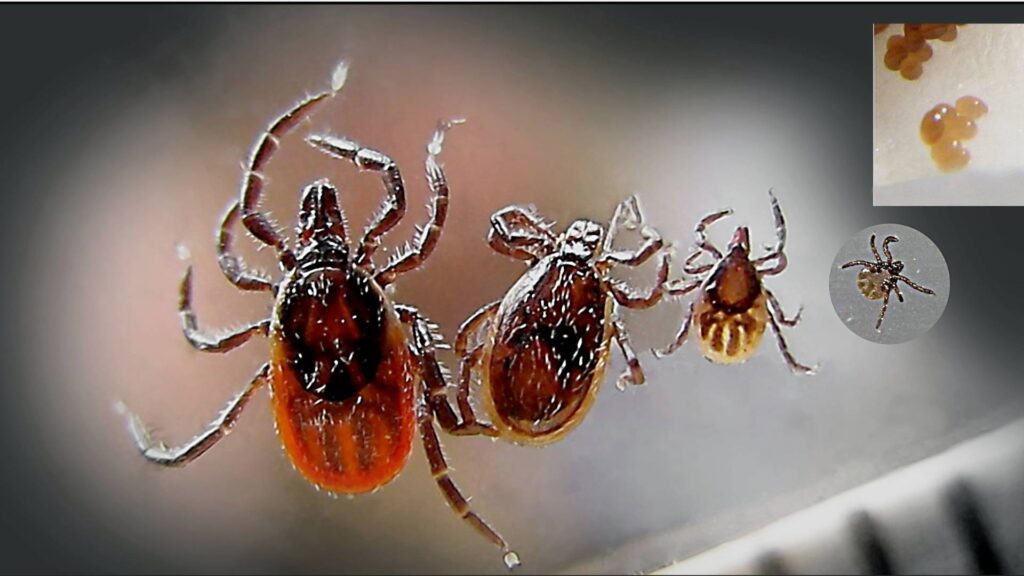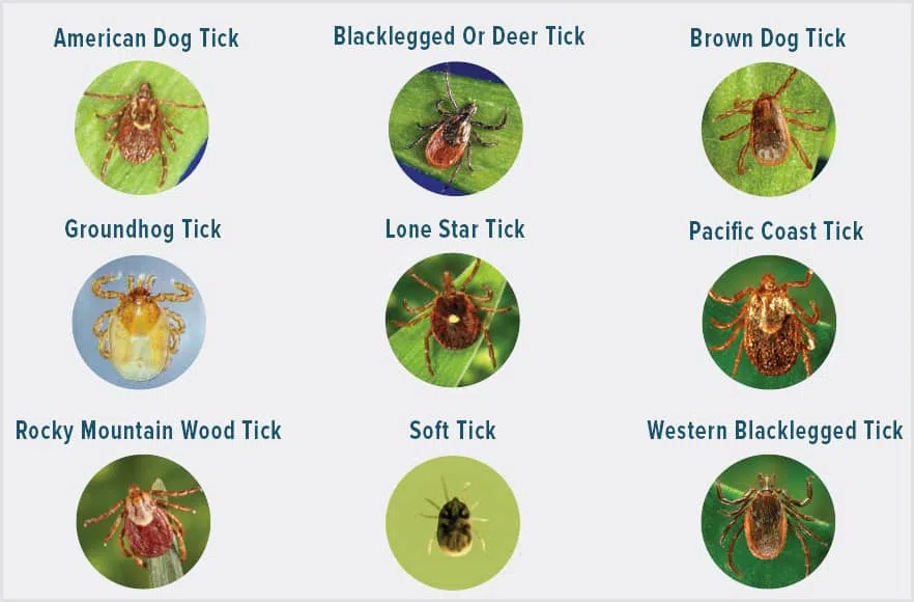Tick Treatments in Florida
Exterminator Services for Clearwater, Clearwater Beach, Largo, and Belleair Beach
Florida’s subtropical temperatures, mild winters, and abundant humidity create an environment where ticks remain a persistent concern. These minuscule parasites latch onto warm-blooded hosts—often family pets but sometimes humans—sparking itchy bites and, on occasion, potential health threats from pathogens they can carry. In Clearwater, Clearwater Beach, Largo, or Belleair Beach, ignoring the possibility of a tick problem can lead to ongoing irritation for pets, discomfort for people, and fears of tick-borne illnesses if they become prevalent. This service page explains why ticks flourish in Florida’s climate, the clues revealing an active infestation, and the importance of employing a professional tick exterminator for thorough tick treatments. Acting swiftly upon noticing ticks or bites spares you and your animals from further distress, potential diseases, and lengthy eradication procedures.
Why Ticks Thrive in Florida
- Consistently Warm Temperatures
In many states, ticks face a forced slowdown or die-off during harsh winter. Florida’s balmy winter seldom dips below freezing for extended periods, allowing tick populations to remain active throughout the year. Even minor cold spells do not typically eliminate them indoors, as air-conditioned or heated spaces still provide moderate conditions. - High Humidity and Rainfall
Ticks require moisture, especially in their early life stages—like larvae and nymphs—to avoid desiccation. Florida’s humidity, coupled with seasonal rains, maintains damp grass, leaf litter, or yard edges. These moist zones create microhabitats in which ticks can hatch, develop, and lie in wait for passing hosts. - Minimal Seasonal Dormancy
In cooler regions, ticks may stay dormant or experience slowed reproduction over long winters. Florida’s mild climate omits such protracted chill, enabling ticks to breed and seek hosts consistently. A small population, introduced by a pet or local wildlife, can expand swiftly if undetected. - Abundant Wildlife and Pets
Ticks typically feed on animals before they target humans. In southwestern Florida, including Clearwater, stray cats, raccoons, or opossums bring ticks into residential yards. Household dogs or cats encountering these infested outdoor areas can bring ticks inside. Once indoors, certain ticks adapt to living in carpeting, baseboards, or pet bedding if conditions remain suitable. - Ongoing Population Movement
Short-term rentals, seasonal visitors, and occupant changes in tourist-friendly spots like Clearwater Beach can inadvertently facilitate tick spread. Ticks occasionally hitch rides in clothing seams, luggage, or secondhand furnishings from one property to another. By the time owners discover them, ticks might have already established an indoor or outdoor population.

Signs of a Tick Problem
- Excessive Pet Scratching
Dogs or cats with fleas may also carry ticks. Repeated scratching or biting at specific areas—especially around the ears, neck, or belly—may reveal embedded ticks. Running fingers or a fine-toothed flea comb across your pet’s fur can expose small, dark ticks clinging near the skin, sometimes engorged after feeding. - Ticks on Floors or Walls
Certain tick species (like brown dog ticks) can finish their entire life cycle indoors if they find ample shelter. Spotting slow-moving ticks on baseboards, behind doors, or along wall edges indicates a growing indoor infestation. Ticks may also gather near pet bedding corners, waiting for a host’s return. - Bites on Humans
Though many ticks favor pets, they will bite humans if necessary. Tick bites often present as small, red, itchy bumps. Sometimes, a tick remains attached, requiring careful removal with tweezers. If you find multiple unexplained bites after yard work or an indoor search, it hints at a tick presence in or around your property. - Tick Eggs in Yard Debris
Ticks deposit clusters of eggs in hidden, often moist spots outdoors. Thorough yard raking or cleanup might inadvertently reveal small, translucent egg masses. Checking shady lawn edges, thick shrubs, or yard corners with damp leaf piles can uncover breeding grounds. - Pets Avoiding or Fearing Certain Spots
If your dog or cat refuses to enter a particular yard section or corner, they may sense tick activity. Observing this odd behavior can help direct you to investigate that area more closely, possibly revealing ticks in the grass or in leaf litter.
Dangers of Ignoring Ticks
- Disease Transmission
Some ticks carry pathogens that can cause conditions like ehrlichiosis or anaplasmosis, though Lyme disease is less common in Florida than in some northern states. Still, each bite raises the possibility of infection for both pets and humans, underscoring the necessity of prompt elimination. - Prolonged Pet Agony
Ticks latch onto pets, feeding on blood and causing persistent itching or allergic reactions. Animals severely infested may become lethargic from blood loss, or risk tick-borne illnesses. Resolving tick issues quickly spares pets from ongoing distress. - Household Anxiety
Ticks discovered on carpets, furniture, or clothing unsettle residents, especially if family members fear potential bites. People may keep children or pets out of certain rooms or avoid going outdoors. Addressing ticks ensures daily life remains calm and unrestrictive. - Expanding Infestations
A few adult ticks can lay numerous eggs in shady yard corners or hidden indoor spots like baseboards. These dormant eggs hatch into larvae or nymphs when conditions remain humid, sparking new waves of biting ticks if the problem is not tackled early.
Why Professional Exterminator Solutions for Tick Treatments Are Vital
- Complete Inspection
A tick exterminator thoroughly surveys indoor rooms—particularly pet areas—plus the yard perimeter or damp corners where ticks might gather. Identifying species (e.g., brown dog ticks, lone star ticks) shapes the approach needed: indoor control measures, yard treatments, or both. - Indoor and Outdoor Coverage
Ticks usually originate outdoors, attaching to pets and then dropping off indoors. True success demands yard-based treatments—like insect growth regulators or larvicides—plus interior vacuuming or targeted spray applications. This broad method kills ticks at every life stage. - Targeted Chemical Use
Overusing or randomly spraying insecticides can harm beneficial organisms or raise occupant risks. Professionals apply insect growth regulators or contact insecticides precisely in the places fleas and ticks cluster—like baseboard corners, under furniture, or yard edges. This approach balances occupant safety with thorough coverage. - Breaking the Life Cycle
Tick eggs or pupae that remain after partial control measures can hatch weeks later, sparking new waves of biting ticks. Scheduling re-checks ensures that these emergent ticks face lethal conditions from residual applications or occupant vigilance, preventing re-infestation. - Coordination with Pet Care
Since ticks depend on animals for meals, occupant synergy with veterinarian-approved preventatives remains essential. Flea or tick collars, monthly topical solutions, or oral medications guarantee that if new ticks hitch a ride on pets, they soon die, rather than reproducing indoors.

Standard Exterminator Methods
- Vacuuming and Steaming Indoors
Thorough vacuuming lifts adult ticks, eggs, or nymphs from carpets, furniture cushions, or pet bedding. Immediately discarding vacuum bags in sealed plastic outside denies ticks re-entry. Some exterminators may also use steam on rugs or upholstery to kill ticks on contact. - Insect Growth Regulators (IGRs)
Spraying IGRs around baseboards, corners, or yard boundaries blocks ticks from maturing to biting adults. Combined with adulticidal sprays or dusts, this multi-pronged tactic kills existing ticks and prevents new arrivals from reproducing. - Outdoor Yard Treatments
Ticks hide in tall grass, shady yard edges, and damp underbrush. Treating those zones—especially fence lines or areas frequented by pets—kills larvae and nymphs awaiting a warm-blooded host. Maintaining short grass, clearing leaves, and discouraging wildlife from yard corners also help. - Pet Collaboration
Occupants must treat or groom pets using veterinarian advice. Flea/tick shampoos, spot-on treatments, or chewable preventatives protect animals from becoming a tick carrier, ensuring that even if the yard has stray ticks, they won’t survive long on a treated pet. - Follow-Up Inspections
Because tick eggs can hatch weeks after initial removal, scheduling a second appointment or occupant monitoring helps confirm that newly emerged ticks do not reestablish. If occupant sightings resume, additional yard or indoor spot treatments can finalize eradication.
Coverage Areas: Clearwater, Clearwater Beach, Largo, and Belleair Beach
Clearwater: A bustling city with consistent tourist appeal and a mix of residential neighborhoods. Ticks may hitch rides with travelers or flourish in yards with thick shrubs near homes. Early occupant detection—like noticing pet scratching or lumps near ankles—facilitates swift, thorough solutions.
Clearwater Beach: A key vacation spot featuring hotels, short-term rentals, and permanent dwellers. Pet-friendly beaches or dog parks can be hot zones for ticks if owners skip monthly preventatives. Regular occupant checks, combined with yard upkeep, hamper widespread tick expansions in lodging places.
Largo: A suburban area featuring older homes plus newer developments. Older yards with dense vegetation or partial standing water might harbor ticks if left unmanaged. Scheduling property sweeps or occupant vigilance about dog runs or shady yard edges keep these pests at bay.
Belleair Beach: Known for its quieter coastal living, Belleair Beach properties might see ticks introduced by local wildlife crossing yards or pets returning from dog-friendly beaches. Regular checks for ticks on animals or near deck corners hamper hidden breeding.
Why Our Tick Treatments Excel
- Florida-Focused Tactics
Because ticks remain active nearly year-round in Florida, we combine occupant diligence—like removing leaf litter, frequent pet grooming—with thorough yard and indoor strategies. This synergy halts ticks in every life stage, from egg to adult. - Tailored, Minimal Exposure
We apply insect growth regulators or adulticidal sprays precisely where ticks dwell—like corners, baseboards, or yard boundaries—rather than indiscriminate coverage. This focused approach maximizes impact on ticks while minimizing occupant or pet contact with chemicals. - Emphasis on Pet-Veterinarian Coordination
Because ticks commonly target dogs or cats, ensuring pets remain on monthly treatments or flea/tick collars is crucial. Even if the environment is sanitized, unprotected animals risk reinfestation from random yard or outdoor exposures. - Post-Treatment Confirmation
Because tick eggs might hatch after initial steps, scheduling re-checks or occupant-based monitoring ensures newly emerged ticks face lethal conditions. If occupant sightings persist, we reinforce yard sprays or internal treatments for ultimate closure.
- Florida-Focused Tactics

Next Steps
Seeing pets itch incessantly, noticing small, dark ticks on floors or near baseboards, or discovering itchy bites around your ankles? Contact us to learn more or schedule your service. Our tick exterminator approach in Clearwater, Clearwater Beach, Largo, and Belleair Beach locates ticks in every stage, from eggs in shady yard spots to adults lurking around pet resting areas indoors. Moving swiftly spares you weeks of repeated bites, unsettled pets, and concerns about possible tick-borne infections.
By integrating occupant housekeeping, yard maintenance, and veterinarian-approved pet prevention with professional applications of insect growth regulators or targeted sprays, ticks lose their breeding foothold. Freed of these parasites, families and businesses can relish southwestern Florida’s comfortable climate without constant itching or fear of undiscovered ticks lurking under rugs or hidden in yard debris.
Sustaining a Tick-Free Setting
Once you eliminate ticks, several ongoing practices deter future arrivals:
- Vacuum Regularly: Frequent carpet, rug, and upholstery vacuuming picks up stray eggs or nymphs. Dispose of vacuum contents in sealed plastic outside the home.
- Wash Pet Bedding: Launder bedding on hot cycles weekly. This kills fleas or ticks that accumulate where pets rest.
- Trim Yards and Remove Debris: Keep lawns short, discard leaf litter or piles of branches, and minimize thick undergrowth. Restrict shady, damp corners where ticks breed.
- Use Pet Preventatives: Monthly topical or oral tick control, recommended by veterinarians, kills ticks attaching to dogs or cats, preventing them from dropping off indoors and reproducing.
- Post-Outdoor Checks: After yard work or beach visits with pets, inspect clothing, socks, or the animal’s fur, especially near ears or paws, removing ticks before they embed.
By combining these occupant-based efforts with routine professional vigilance, southwestern Florida residents maintain a tick-limited environment. Even given Florida’s mild winters and heavy humidity—perfect for ticks—consistent diligence plus specialized extermination ensures you, your pets, and guests stay comfortable and bite-free.
